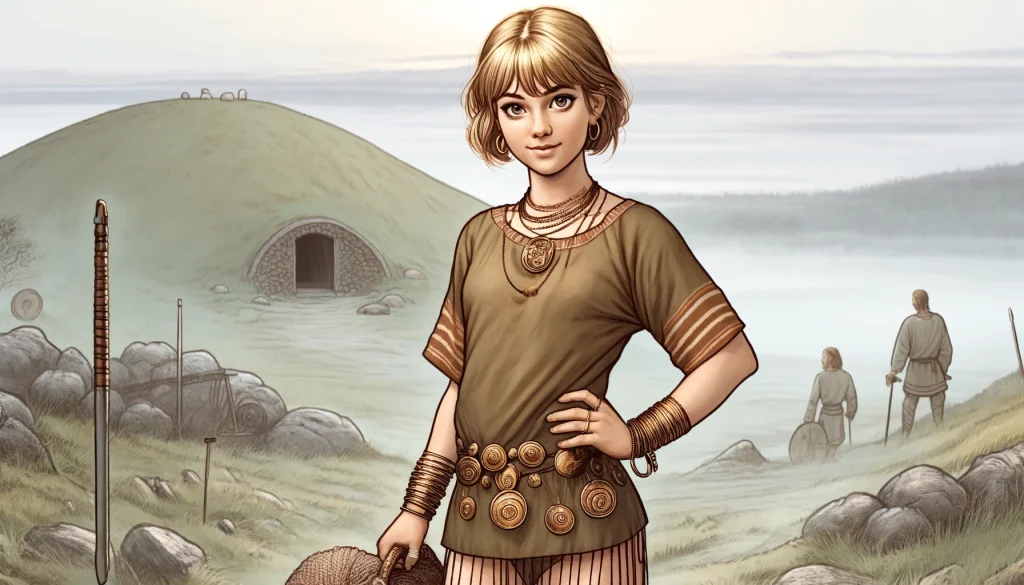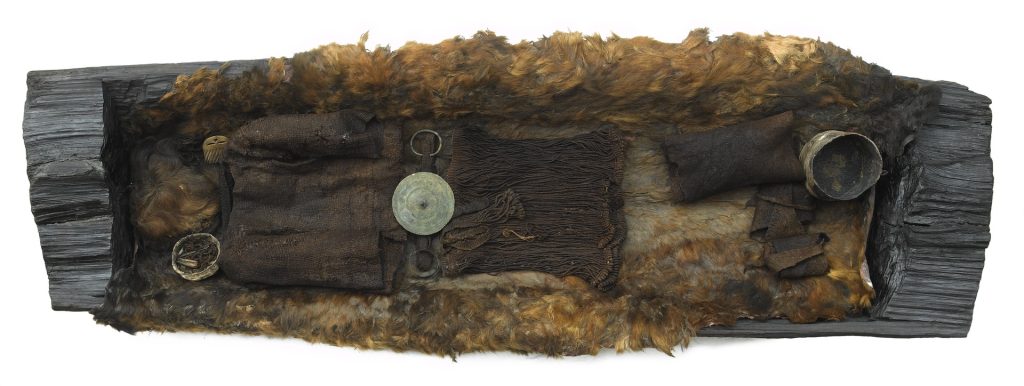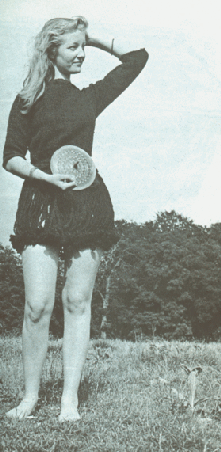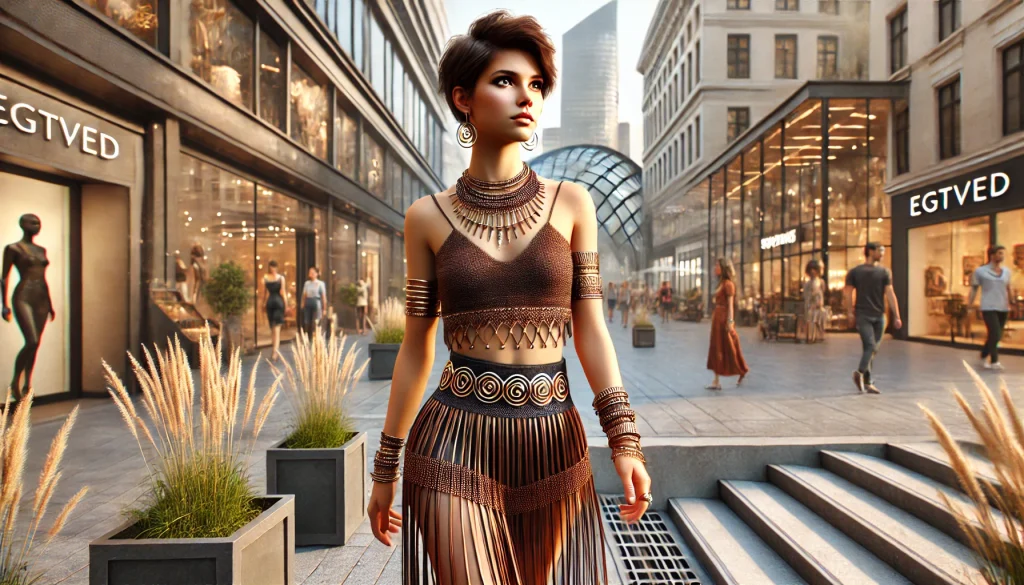The Egtved Girl: A Bronze Age Teenager Who’d Rule the Fashion Scene Today

A Mysterious Discovery in Denmark
It was a chilly February day in 1921 when archaeologists unearthed a time capsule from the Nordic Bronze Age. Buried in an oak coffin beneath a mound in Egtved, Denmark, was a teenage girl, her story frozen in time for over 3,500 years. Her remains, though limited to hair, teeth, nails, and a bit of skin, told a powerful story about life, fashion, and rituals in ancient Scandinavia.

She wasn’t alone in her grave—alongside her were the cremated remains of a child, a small box containing grooming tools, and a bucket of what was essentially prehistoric beer. Clearly, she was someone of importance. But who was the Egtved Girl, and what would she have been like if she lived today?
What She Wore: The Ultimate Bronze Age Aesthetic
Let’s talk about her outfit—because, honestly, it was a look. The Egtved Girl’s wardrobe was minimalist yet striking. She wore a short-sleeved wool tunic, leaving her waist bare, and a string skirt that screamed boho-chic. Wrapped around her hips was a woven belt with a large, intricately designed bronze belt plate.
This plate wasn’t just a stylish accessory—it was likely a religious or social symbol, possibly linked to sun worship. On her arms, she wore bronze bracelets, and in her ears, a delicate ring. Her belt also held a horn comb, because personal grooming was clearly a priority. This level of detail in her burial suggests she was someone important—maybe a priestess, a leader, or a person of high status.
Her string skirt, in particular, has fascinated historians and designers alike. This wasn’t a one-off fashion statement; similar skirts have been found in other Nordic Bronze Age burials, indicating that this was a common style for women of her time. The look has even inspired modern designers, with elements of her outfit popping up in festival fashion, runway shows, and even casual streetwear.\

What Kind of Person Was She?
The Egtved Girl was just 16 to 18 years old when she died, but her burial suggests she had lived a vibrant life. She had well-trimmed nails and short, neatly kept blonde hair—hints that she cared about her appearance. Strontium isotope analysis initially suggested she had traveled from Germany to Denmark, possibly as part of a diplomatic marriage, but later research indicated she was more likely a local who moved seasonally for farming or trade.

If she were alive today, she’d probably be the effortlessly cool girl you see at music festivals, sporting an ethereal boho look with intricate jewelry. Maybe she’d be a history major with a love for mythology, or perhaps an indie musician with a deep appreciation for folklore. She had a presence—one that, 3,500 years later, still commands attention.
The Influence of the Egtved Girl’s Style
Fashion is cyclical, and elements of the Egtved Girl’s wardrobe have reappeared throughout history. Her string skirt, for example, is reminiscent of fringe-heavy flapper dresses from the 1920s and the free-spirited looks of the 1960s and 70s. Today, you can see echoes of her aesthetic in high-waisted skirts, crop tops, and earthy accessories.

But it’s not just her fashion that’s left an impact—her story has influenced modern archaeology, inspiring new discussions about the role of women in ancient societies. She challenges the traditional view of Bronze Age women as passive figures, showing that they had defined roles, possibly as religious or cultural leaders.

A Teenage Girl Who Became a Legend
The Egtved Girl was more than just a Bronze Age fashion icon—she was a young woman with a life, dreams, and a culture that valued her enough to give her an elaborate burial. Whether she was a priestess, a traveler, or a leader, her legacy remains alive in history books, museum displays, and even in today’s fashion trends.
So, the next time you see someone rocking a high-waisted skirt and a statement belt, just remember—they might owe a little inspiration to a teenage girl from ancient Denmark, whose sense of style was 3,500 years ahead of its time.